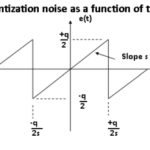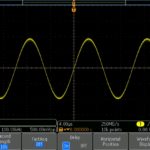Use of electronics and capacitive-based position sensing have transformed the caliper, a fundamental and essential instrument of precision linear-dimension measurement. Part 1 of this FAQ looked briefly at the basic mechanical, Vernier, and dial-readout calipers, as well as the micrometer. All these mechanical-only embodiments of the caliper were made obsolete within a few years with […]
basics
Digital caliper, Pt 1: Background and predecessors
Use of electronics and capacitive-based position sensing have transformed the caliper, a fundamental and essential instrument of precision linear-dimension measurement. Making precise measurements across small distances of up to several inches or tens of centimeters is an obvious and fundamental requirement of modern metrology, research, and mass production. But how can that be done accurately, […]
The basics of digital oscilloscope acquisition controls
Digital oscilloscopes are characterized by an acquisition menu, permitting the user to choose among modes and to select the record length, horizontal position and waveform, and to turn on or off Fast Acq, Delay and XY Display. We’ll look at each of these in turn. The essence of digitalization is that points comprising a waveform […]
Precision and accuracy in oscilloscopes
The precision and accuracy of voltage measurements made with a digital scope are affected by the speed at which samples are taken, i.e. the sampling rate, and sampling depth or bit depth. Bit depth is just the number of bits of information in each sample, and it directly corresponds to the resolution of each sample. […]
Using the scope integration function to determine energy use
Integrals come in handy in measuring power consumption when that consumption is intermittent or corresponds to a dissipation vs. time function that is irregularly shaped. The classic example is that of a controller that wakes up every second or so. You can, of course, use single-shot capture to get the current waveform when the controller […]
Why the sky is blue: LiDAR puts a focus on measuring Raleigh scattering
Most people assume the sky is blue because through a process of refraction we see the higher-frequency, shorter-wavelength end of the spectrum. This explanation is incorrect. For one thing, if the entire sky is blue, what happened to the rest of the spectrum? It’s complicated. In actuality, the blue appearance of the sky and yellow […]
Dealing with noise in electronic circuits
Where there is matter, there is the potential for free electrons, and unless the temperature is absolute zero, these electrons exhibit random motion. Thus the basis for noise in electronic circuits. In metals such as copper, the number of these free electrons is large and their motion appears to be independent and truly random. Electronics […]
Understanding basic oscilloscope uses
The dominant oscilloscope type today is digital. A relatively small number of analog oscilloscopes are still made for educational purposes and low-end DIY kits. The digital revolution in oscilloscope design, initiated by Walter LeCroy over 50 years ago, made possible vast new capabilities and features. Still, it is worthwhile for perspective to look back at […]
Budget-priced transistor testing
The field-effect transistor (FET) in one form or another has largely superseded the earlier bipolar junction transistor (BJT). Both can do amplification, oscillation, and switching, but the methods in getting there are quite different as are the input and output impedances. First, by way of background, we’ll look back at the BJT. It contains three […]
Measuring energy without getting fooled
James Prescott Joule, in formulating what is now known as Joule’s Law, found that various forms of energy such as mechanical, electrical and heat are essentially identical and can be changed one into the other. His work formed the theoretical basis for the First Law of Thermodynamics. Joule further investigated the phenomenon of magnetostriction. He […]










